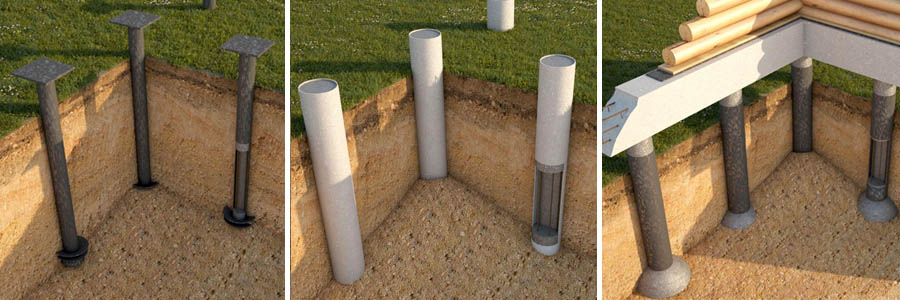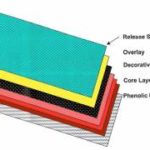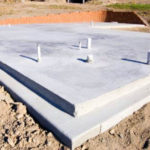Foundation piles are thin struts which can be sunk into the ground or manufactured in the wells drilled in the ground, they transmit the load from the construction of a more dense layers of the soil. Along their length they may have a constant cross-section (prismatic and cylindrical) or variable (pyramidal, trapezoidal, diamond-shaped).
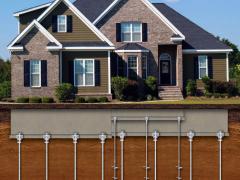 The shape of the cross section of a pile can be:
The shape of the cross section of a pile can be:
- distinguish square,
- rectangular,
- round,
- triangular,
- tubular,
- trapezoidal.
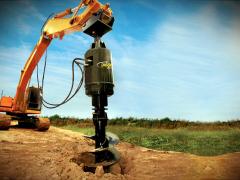 Dived into the ground, they are usually overlapped by a beam or a slab called a grillage. A grillage serves for mutual connection between the piles and provides an alignment of their precipitation under loads. Depending on the material of piles and position of the permanent groundwater level grillages can be made of:
Dived into the ground, they are usually overlapped by a beam or a slab called a grillage. A grillage serves for mutual connection between the piles and provides an alignment of their precipitation under loads. Depending on the material of piles and position of the permanent groundwater level grillages can be made of:
- timber,
- concrete,
- reinforced concrete.
There are foundations with high and low grillages. When dealing with high one, its sole is not in contact with the surface of the soil. Such grillages can satisfy you in such cases when the soil surface is covered by water (for example, in the construction of quays, piers, etc.). Low ones are good for foundations of civil buildings (for example, when applying the technical underground).
In the industrial and civil construction low grillages are used more often. The mark of a low grillage penetration into the soil depends on the presence of basements and passing them underground utilities, the possibility of swelling soils, the depth of the adjacent foundations and some other reasons.
Hanging piles are based on compressible grounds tip and transmit the load to the ground along the cross-sectional area and on the side surface of piling, interacting with the surrounding soil.
Classification
Piles differ according to the material they made of, their position in the vertical plane, their shape of the transverse and longitudinal sections or a method of diving them into the ground.
Depending on the material there are piles made of:
- wood,
- metal,
- concrete,
- reinforced concrete.
Recently soil-concrete, ground and sand ones also appeared.
 Depending on their position there are vertical and inclined piles. Inclined ones serves for holding horizontal loads.
Depending on their position there are vertical and inclined piles. Inclined ones serves for holding horizontal loads.
Depending on manufacturing process all the piles are divided into two groups: ready piles (they are dived into the ground by clogging, indentation, screwing, etc.) and ramming piles (manufactured directly in the borehole previously drilled or punched in the ground).
The cross-section of piles may be entire (full-bodied) or hollow (hollow and shell). There is no principal difference between hollow and shell piles. Typically when the diameter (side) of a cross section of a pile is about 2,5 feet and the internal cavity exist we can call the piles like these hollow. Under the same conditions, but with a diameter of more than 2,5 feet, piles are usually considered as shell ones.
Hollow and shell pile can have open and closed lower ends which affects the production process and work on the bearing capacity of a pile. To increase the bearing capacity of piles in the lower ends a broadened heel is often set (by drilling or explosion). Broadened heels may also take place dealing with driven piles.
For the manufacture of metal piles seamless tubes with a diameter of 2-3 feet and more are used. Large diameter pipes are often dived into the soil with the help of scour. Pipes immersed into the ground are filled with concrete. Now a pile like this can have a carrying capacity of 250-300 tons and more.
There is such kind of metal piles as screw ones which can be up to 130 feet long, the diameter of their screw blade is up to 8 feet. Their bearing capacity can reaches 400-500 ton. They are screwed into the ground using a capstan (a special type of winch). The advantage of screw piles is the ability to fasten screwing without jolts and bumps. In addition, they resist very well to compression and pull-out in an equal way. More over, crew piles are more cost-effective than concrete ones in massive construction process.
Recently leading engineers have designed piles where steel shells are replaced with precast concrete ones. Piles of this type are dived by being placed inside the shell of the steel core which is connected with a blender. After screwing the shell and the core are disconnected. Because of the fact that metal gets corroded in the area of variable humidity, for their protection they are usually painted or coated with bitumen, coal tar or some special coated anticorrosive films.
Screw blades can be made of cast iron, steel, concrete, plastic and fiberglass. The latter have a high mechanical strength, it is non-corrosive and well handled. The blades made of fiberglass can be given any shape and smooth surface which drastically reduces the coefficient of friction on the ground while diving the piles.
Ready piles are produced of several main types. Also it may be a combination of various methods of constructing of pile trunks and broadened heels.
Placing piles inside a foundation
Grillages are plates combining piles heads and ensuring their collaboration, They are made mostly of concrete or reinforced concrete. Wooden grillages are not very useful. As for its shape, a grillage usually repeats the plan of the support structure or parts of buildings which needs the designing of pile foundation.
Depending on the size and the shape of a pile foundation there are the so-called:
- ‘bushes’,
- ‘strips’,
- ‘fields’.
A ‘pile bush’ includes a relatively small number of piles with an aspect ratio of grillage sides of no more than 1:5. It can be good for foundations under columns, racks and individual tall structures (for example, smoke extraction pipes).
A ‘pile strip’ is usually formed for foundations of very large civil and industrial buildings (strip foundations), for example, the foundations of embankments and, etc.
A ‘pile field’ is very much alike a ‘pile bush’ but is smaller and has less number of piles. It can be made, for example, for foundations of bridge piers, waterworks and some buildings and structures on the solid grillage over their entire area.
Piles are arranged in rows or in a staggered manner. When dealing with a small number of piles, they are usually arranged in two rows. A staggered manner is good when dealing with a lot of piles. The distance from the piles’ extreme axis to the edge of a grillage should be equal to the diameter of the pile.
Pile foundations are applied on unstable grounds to reduce the construction costs of the building. It is important to remember that design of this support structure should be made by a highly skilled person (builder). Non-professional work can lead to sad and dangerous for people’s lives consequences.
Recommend:
